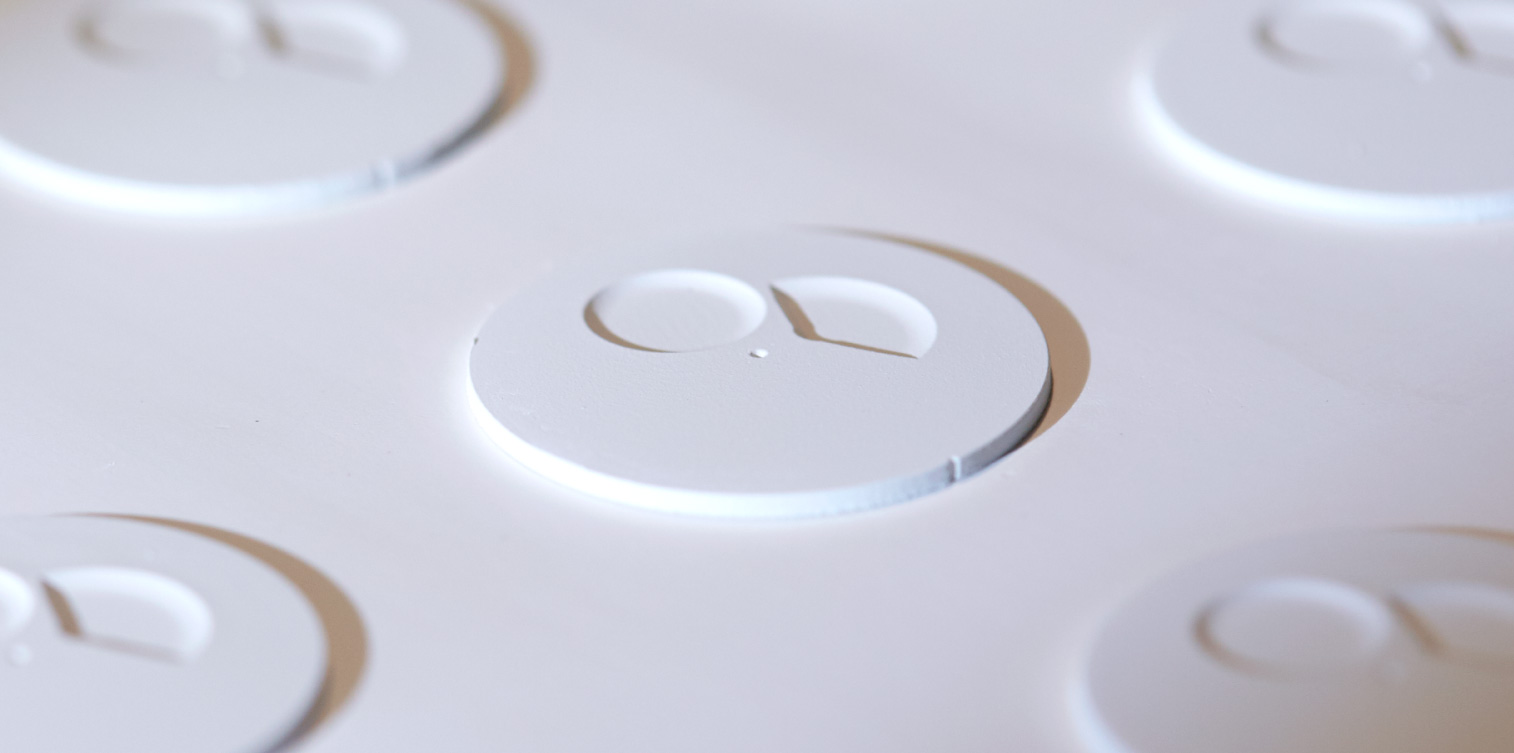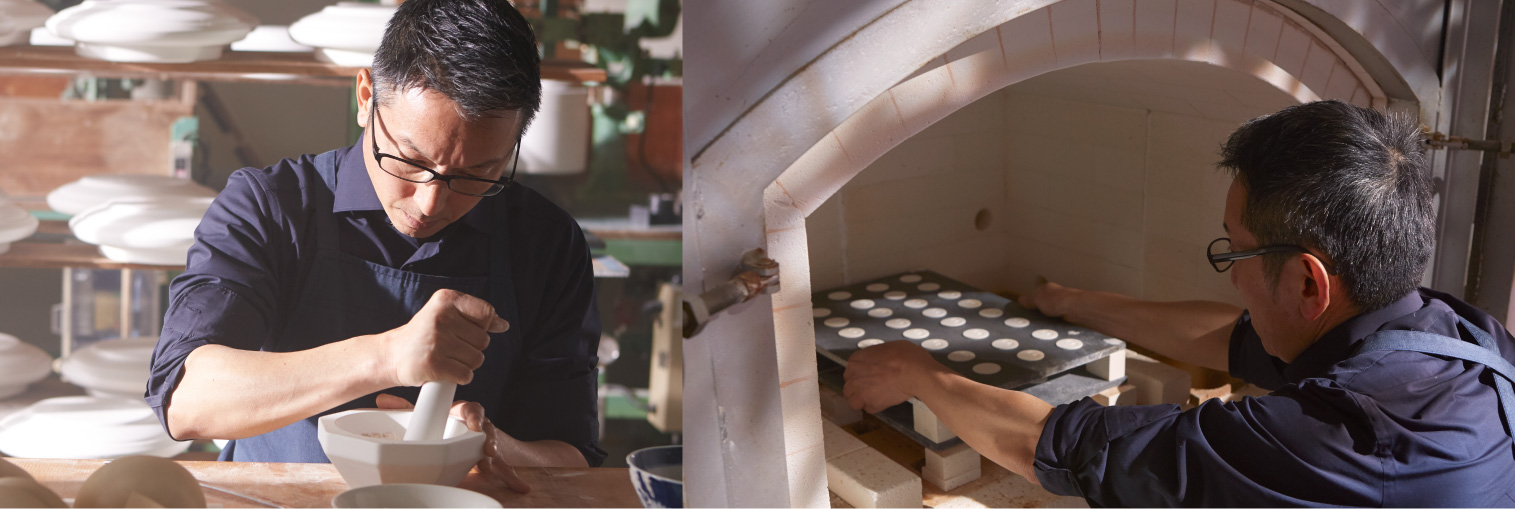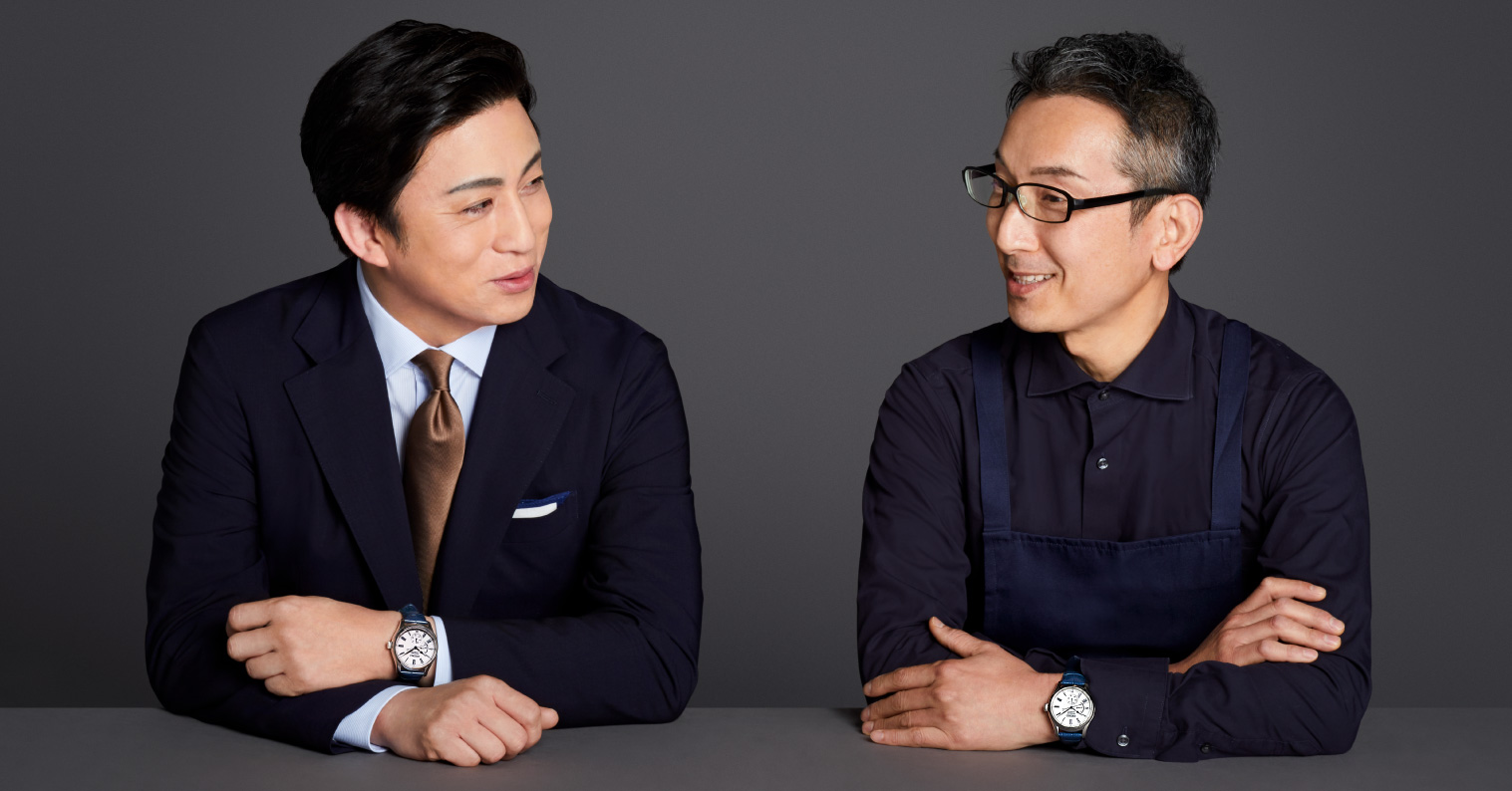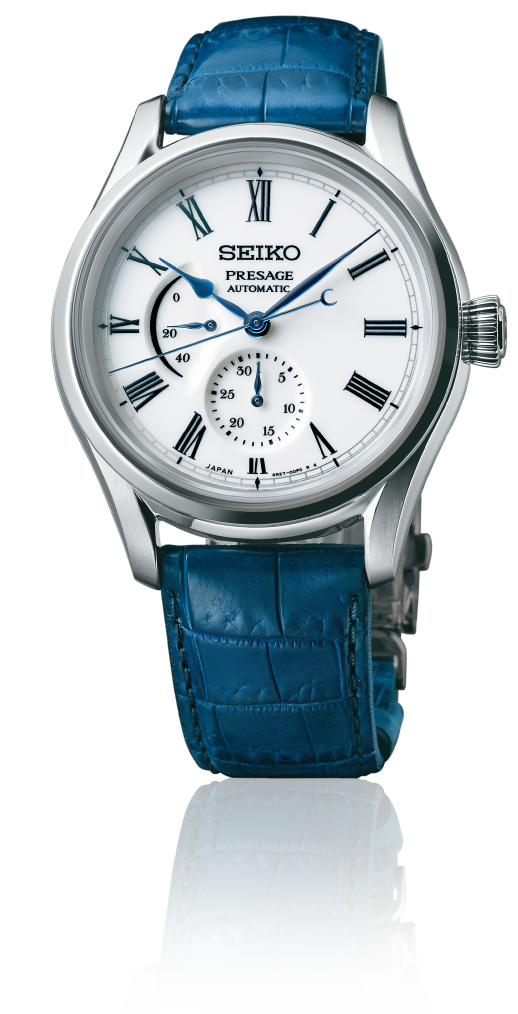The dial reflects the elegant beauty of the
moon dancing on the water
Matsumoto Koshiro: This white dial looks translucent and glossy. I feel a sense of graciousness from it. I understand that with a metal dial, it may be difficult to create a gentle appearance to such an extent.
Hiroyuki Hashiguchi: That is right. I believe that I have been able to generate the very quality unique to Arita porcelain. I gave this porcelain dial an image of “suigetsu” (the moon on the water), the poetical style favored by Japanese nobilities in the Heian period (794-1192). They are said to have observed the moon not directly but by the sway on the surface of the water.
Matsumoto: I suppose that, unlike creating a typical artwork, you had to work under restraints and difficulties to produce a high-precision industrial part.
Hashiguchi: Exactly. The first thing I had to do was to high-fire the base of what would eventually become the dial at 1,300 degrees Celsius. The next step was to apply glazes and fire it again at about 1,100 degrees. Finally, I made a hole on the porcelain for the watch hands and gave a finishing fire to it. In each firing phase, the porcelain would contract in size very delicately. On the other hand, I had to produce a dial that required precision in units of 10 microns. Moreover, I needed to go through the same firing process many times to produce identical dials in large amounts. As I had had no experience of working that way, it was literally an endless process of trial and error.
Matsumoto: So, you had to not only realize the beauty of artistry, but also meet the criteria for industrial products for daily use.
Matsumoto Koshiro, wearing a Seiko Presage watch, comments: “Once I wear this watch, it spontaneously gives me peace of mind.”
Hashiguchi: As for durability, I had to ensure that my products would pass the stern proprietary criteria set by Seiko. They would not accept anything that “looks beautiful, yet is prone to breaking only after being used just for a while.” Therefore, I sought cooperation from the Saga Ceramics Research Laboratory to use its high-precision molds and developed ceramic materials for porcelain on my own.
Matsumoto: (Listens attentively to the craftsman who is willing to explore new possibilities while upholding the tradition of Arita porcelain. He gives a deep nod to the ceramic artisan.)









